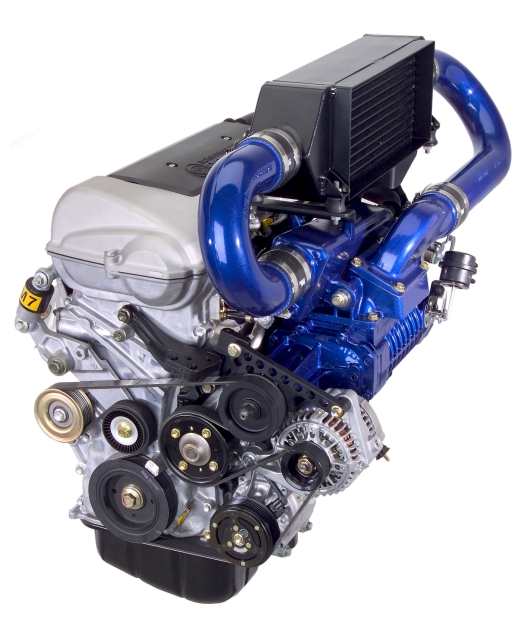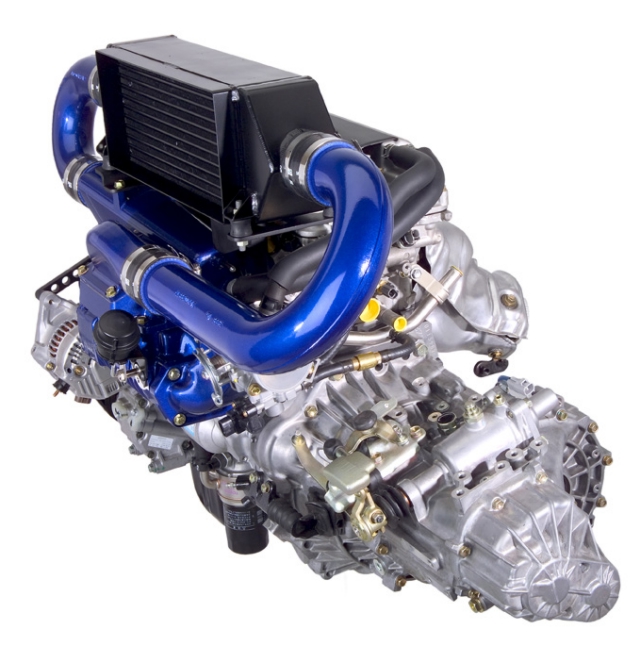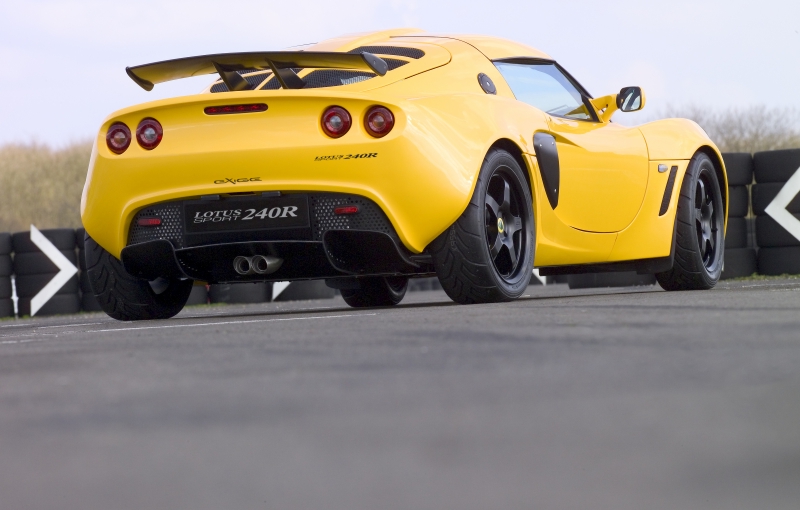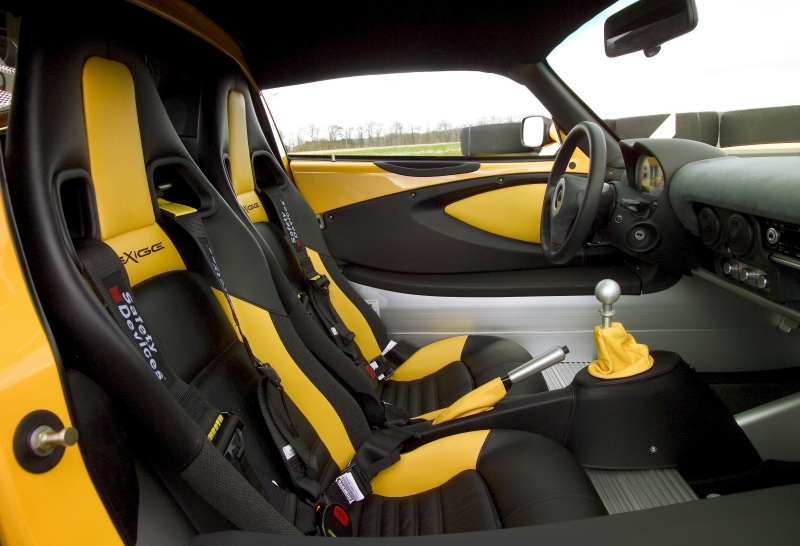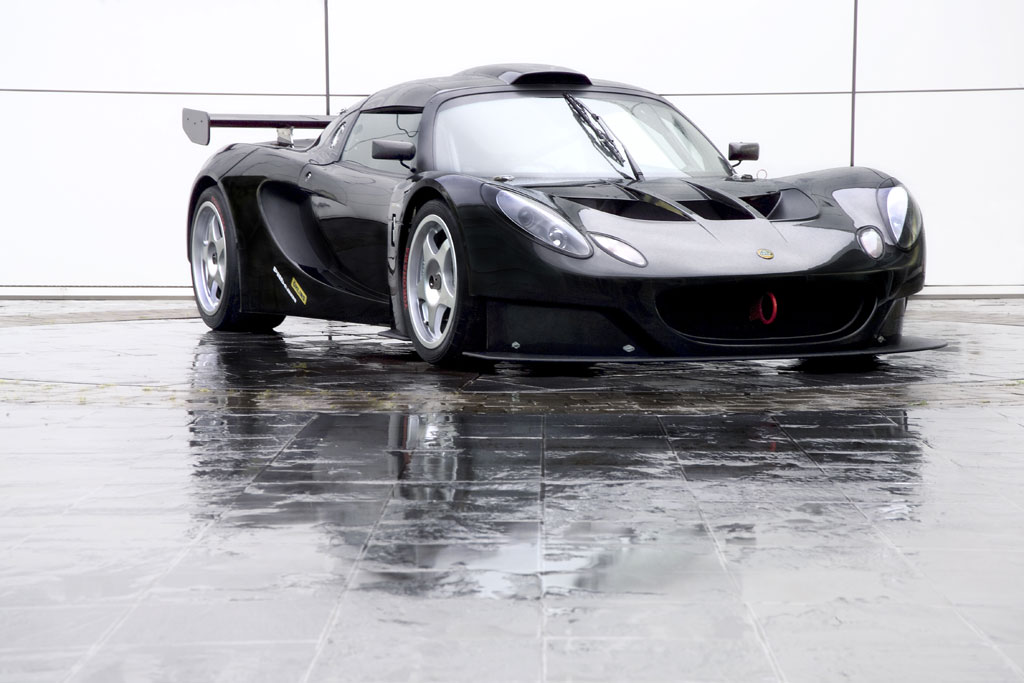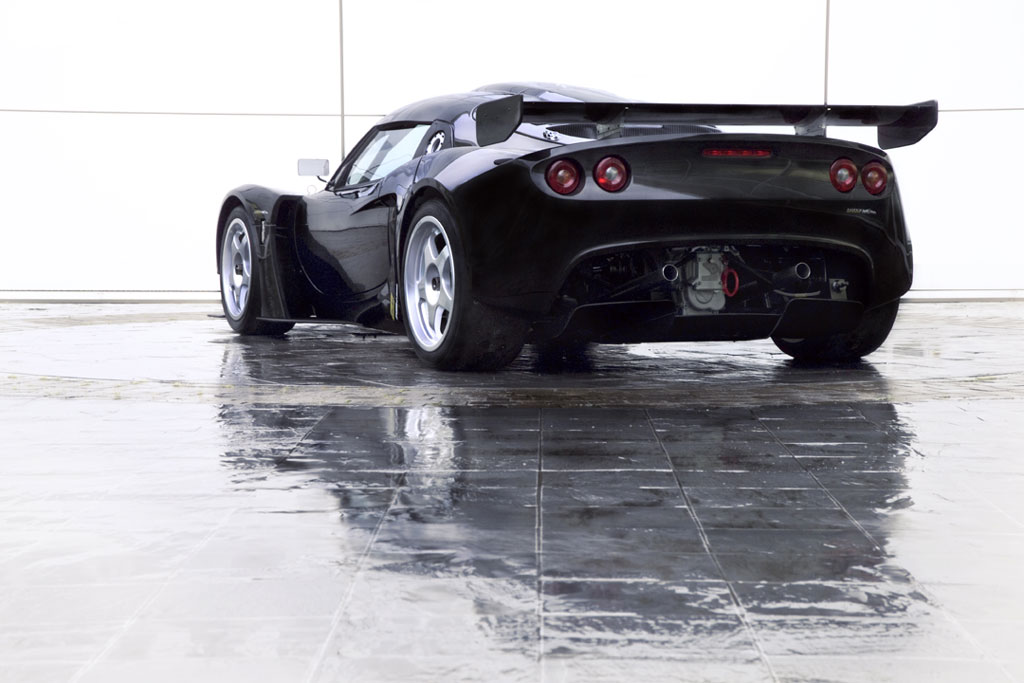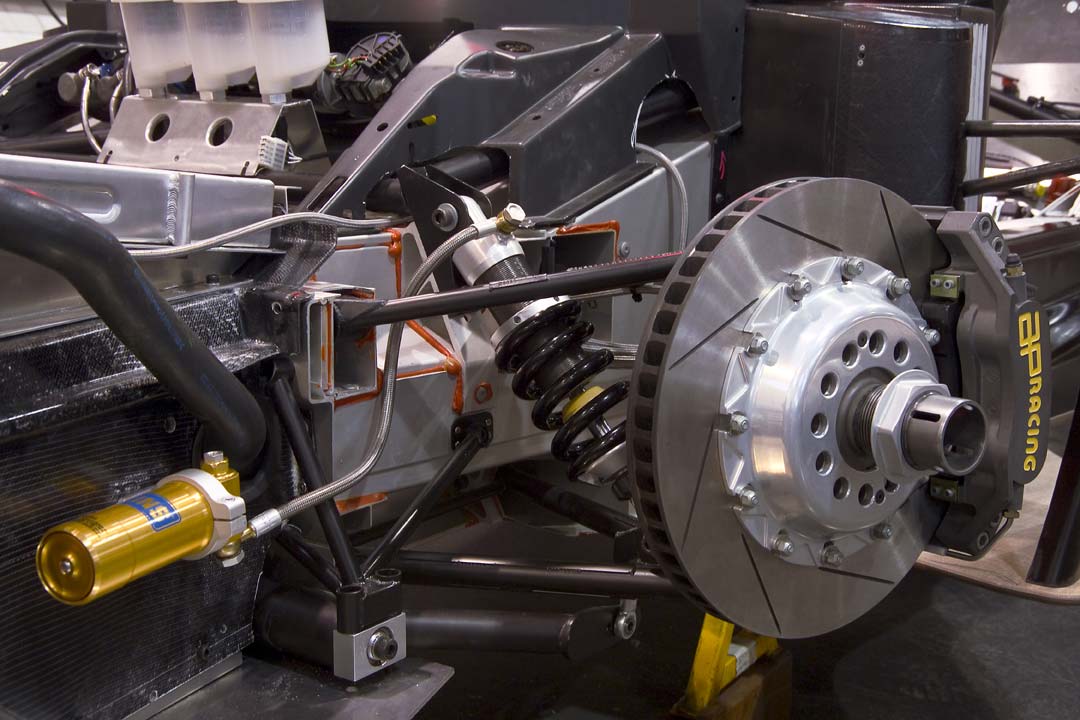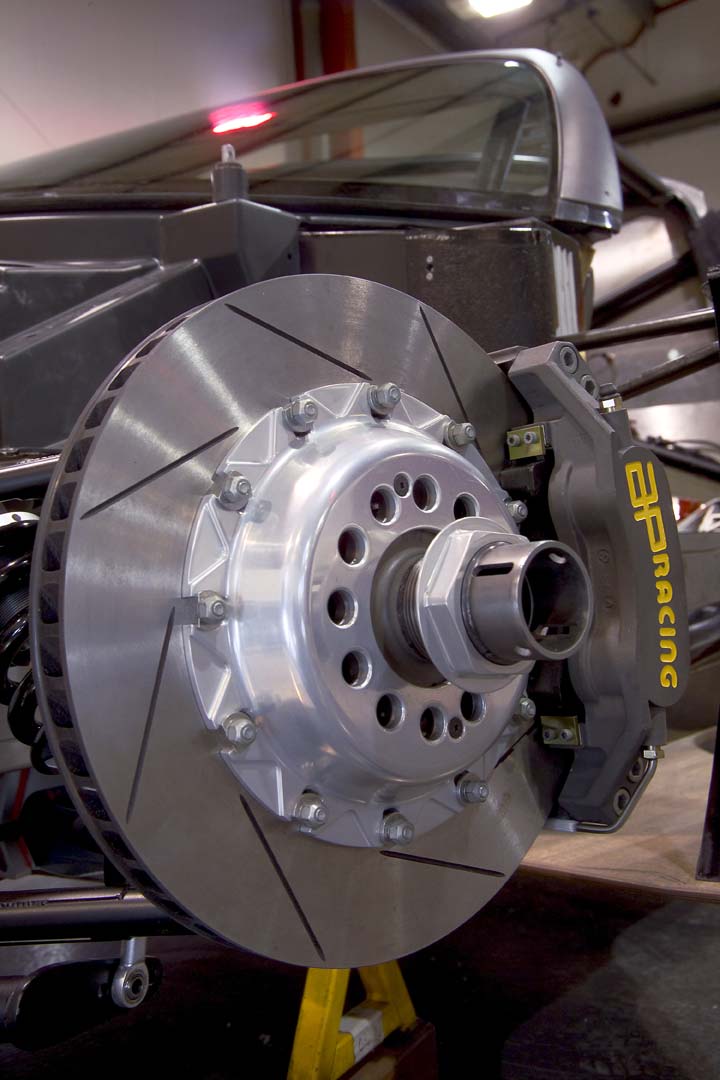Golden Gate Lotus Club
News - Lotus Sport Exige
The Lotus Sport Exige GT3
A prototype of the Lotus Sport Exige GT3 race car was unveiled at the annual FIA GT Championship presentation
ceremony outside the world famous Casino in Monte Carlo, Monaco on 02 December, 2005. The following day (03
December 2005), the first test for the car took place at the high speed Paul Ricard High Tech Test Track in
Southern France under FIA supervision, the first stage in the Lotus Sport Exige GT3 becoming eligible for FIA GT3
competition. This latest FIA series, which will start in 2006, is for race cars that have an equal power to
weight, and that have a direct lineage to their road going versions.
The Lotus Sport Exige GT3 entrant has been developed by Lotus Sport, the performance arm of Lotus Cars and is
a derivative of the standard Lotus Exige coupé model. Weighing in at approximately 750 kg, it stays true to the
“performance through light weight” core Lotus philosophy. The car uses a race prepared 1.8 2ZZ-GE VVTL-i engine
with a Roots type supercharger and air to air intercooler which utilises the Lotus T4e Engine Control Unit to
produce 285 hp (289 PS) at 7,800 rpm. This gives an impressive power to weight ratio of 380 hp/tonne or 2.6 kg/PS.
Following a brief shakedown programme at the Lotus Test Track at Hethel, factory test driver Gavan Kershaw
carried out final chassis set up work on wet tyres in the morning session at the Paul Ricard official FIA test.
This was followed by an outing on slick tyres on a drying track by FIA nominated test driver Christophe Bouchut.
The FIA has announced a five race European championship for the new GT3 class with rounds in the UK, Germany,
Belgium, France and Italy. Various national GT Championships are also considering amending their regulations to
include a GT3 class.
Basic prototype specification
An FIA 6-point roll cage, ignition kill switches, and uprated braking and suspension systems including Öhlins
3-way adjustable dampers also feature on the new race car. A 6-speed sequential transmission system, and full data
logging system have been fitted to the singleseater prototype vehicle.
Availability, full specification, and price of the Lotus Sport Exige GT3 will be announced in early 2006.
Limited Edition Lotus Sport Exige 240R
Lotus Sport, the performance division of Lotus Cars Ltd., has
developed the Lotus Sport Exige 240R, a limited edition high performance sportscar with total global build
volumes kept strictly to 50 cars.
Lotus Sport will build the Lotus Sport Exige 240R within its facilities at the Group Lotus Headquarters
in Hethel, Norfolk. This facility, located in the centre of the famous Hethel Test Track, has a great history
of producing bespoke versions of Lotus products and can list the Lotus Sport Exige 400 hp racecar and over
100 Elise and Exige racing cars in its portfolio.
With a supercharged and intercooled high revving engine producing over 240 hp and over 170 lbft of torque,
the Lotus Sport Exige 240R reaches 60 mph in less than 4 seconds and 100 mph (160 km/h) in less than 10
seconds before topping out at 155 mph (249 km/h). At this top speed the advanced aerodynamics produce 113 kg
of downforce increasing grip, stability and safety.
The 50 versions of the Lotus Sport Exige 240R will be built as post registration official factory conversions
of new Lotus Exiges. Up to 40 of these cars will be sold in the EU and the balance is intended to be predominantly
sold in Japan. The suffix of 240R indicates the approximate horsepower of the engine, conservatively rounded down
from the actual figure of 243 hp (181 kW, 247 PS). The total unladen weight is approximately 930 kg and the power
to weight is approximately 261 hp / tonne (195 kW / tonne, 266 PS / tonne).
All 50 cars will be built to order and to further identify and maintain the exclusivity of the Lotus Sport
Exige 240R, they will only be available in Sport Yellow or Sport Black - both unique and exclusive colours
specifically blended to denote the brand colour scheme of Lotus Sport.
The Lotus Sport Exige 240R will be sold at a Recommended Retail Price of £43,995 (62,000 Euros).
The Lotus Sport Exige 240R also has a unique interior trim in black with Lotus Sport Yellow highlights in
leather. A unique numbered Lotus Sport build plate is fitted to the aluminium chassis member on the passenger side.
The interior also includes sports seats, driver and passenger four-point harnesses which are fitted to a cross bar
that is part of the motorsport specification T45 roll bar.
New lightweight five spoke forged alloy wheels are of a slightly wider section to the standard Exige wheel to
accommodate the optional extra track only specification slick tyres as well as the Yokohama A048 tyres, which
come as standard. These wheels are painted in "Satin Black" for the Sport Yellow painted version of the Lotus
Sport Exige 240R and "High Power Silver" for the Sport Black painted version.
In addition to the powerful four-cylinder engine, the Lotus Sport Exige 240R also includes specially developed
Lotus Sport parts including upgraded brakes, stiffer springs and 2-way adjustable Ohlins dampers with ride height
adjustment, an adjustable front anti-roll bar, twin oil coolers and an Accusump.
Clive Dopson, Managing Director of Lotus Cars Ltd. is very enthusiastic about the new Lotus Sport Exige 240R:
"The Lotus Sport Exige 240R is a classic example of Lotus' focused attitude to performance through lightweight.
We believe that this car, even though it will be built in small volumes, is a very significant addition to the
Lotus product portfolio and will go down in history as such. I am sure that the fortunate fifty customers of
the car will agree."
Chris Arnold, General Manager for Lotus Sport comments: "The Lotus Sport brand has been around for a
number of years, and in that time has developed a number of performance upgrades for customers. The Lotus Sport
Exige 240R is probably the most complete in-house Lotus Sport product that has been developed. It is a testament
to the capability of the Elise platform and the competence of the standard Exige that we haven't had to make
any structural changes to the car to accommodate the power of a 3 litre engine, albeit in the guise of a 1.8
litre engine."
Chris Arnold continues: "These fifty cars are unique, both in appearance and in equipment levels. After
we have made these fifty cars, we will not be building any more to this complete specification. Lotus Sport
has the Lotus product experience to be able to chose the right components for the Lotus Sport Exige 240R so
if customers want the ultimate road going Exige, I recommend that they do not delay and contact their nearest
Lotus dealer as soon as possible!"
Lotus Sport Exige 240R Technical Specifications
NEWS RELEASE
Lotus Sport Exige
470 hp/tonne Race Ready Sport Exige Debuts at Autosport International Show Lotus Sport,
the performance division of Lotus Cars Ltd., has developed the new Lotus Sport Exige, a direct motorsport
derivative of the successful Lotus Exige.
The Lotus designed and engineered racecar was part manufactured by RTN, the team responsible for the Le
Mans winning Bentley, using the latest motorsport techniques and procedures to produce a lightweight yet
strong carbon-fibre bodywork structure around the standard road-going Lotus Exige Aluminium extruded and
bonded chassis.
The Lotus Sport designed fully adjustable suspension system with double wishbones all round was fabricated
and manufactured by Pilbeam. Power is provided by a 400 hp Swindon Racing Engines tuned GM 3 litre V6 racing
engine linked to a Hewland sequential six-speed gearbox, with AP-Racing providing the braking system.
This one-off racecar has been built for a South East Asian client and is expected to race in selected sportscar
races in Asia. There are no plans as yet to build further examples of the Lotus Sport Exige but the base
structure has been carefully designed to comply with key motorsport regulations around the world. Adhering to
the key Lotus philosophy of performance through lightweight, the Lotus Sport Exige weighs in at just 850kg.
The whole project, conducted in complete secrecy has taken less than 6 months and the car will run for the
first time at the 2½ mile Hethel test track in mid January. Chris Arnold, General Manager for Lotus Sport
explains the philosophy behind the Lotus Sport Exige:
"The Lotus Sport Exige is a competition car developed directly from the road going Exige. The racecar uses
the existing tub with only minor modifications, and careful design has enabled Lotus Sport to package an
upgraded powertrain assembly whilst maintaining an equivalent weight to the existing road car. When this
package is combined with further improvements to suspension and bodywork, it produces a fantastic looking car
with great track potential. The car has been taken from concept to reality in only six months and I thank all
our engineering partners and the staff at Lotus who have worked so hard on this fantastic project."
As the Lotus Sport Exige is, at present, a one-off racecar, a price cannot be given for the racecar package.
The Lotus Sport Exige in more Detail:
Chassis and suspension systems
The Exige chassis, which is also used in the Lotus Elise 111R, is the latest development of this award winning
structure and weighs 68kg and has a torsional stiffness of 10500 Nm/degree. Made up of 25 separate extrusions,
and bonded with an epoxy adhesive, the chassis in the Lotus Sport Exige is an exceptionally stiff, strong and
lightweight structure. This Lotus technology is so world-leading that it has been used on other non- Lotus
products including high performance production front-engined V12 and V8 GT cars.
An FIA approved 8-point roll cage has been bolted to the chassis, prior to the bodywork being fitted.
Double wishbone front suspension is mounted to the same suspension hard points as the road-going Lotus Exige,
whilst the rear suspension picks up to a revised rear subframe. However, being a full racecar, there is adjustment
for ride height, camber and castor, as well as adjustable front and rear anti-roll bars. Coil springs are mounted
over Ohlins ST44 3-way adjustable dampers front and rear.
The Body
An aerodynamically developed front splitter, carbon fibre rear diffuser and an adjustable carbon rear wing
provide increased levels of downforce. The interior of the Lotus Sport Exige is similar to the standard Exige, but
the standard roadcar wiring harness is replaced with a full Raychem 25 system incorporating Mil-spec connectors
from Beru Formula 1 Harnesses. Conventional fuses are replaced with circuit breakers, and a Stack display with
integrated data recording is fitted as standard.
A racing bucket seat (driver side only) is mounted as right hand drive to optimise weight balance through right
hand corners (most circuits run clockwise). A six-point seat belt, prepared for using HANS Safety System, and a
removable steering wheel (with quick-connect coupling) is included in the interior package.
The composite energy absorbing crash structure used on the standard road cars is also carried over to the
Lotus Sport Exige. This glass fibre composite structure, around five times more energy absorbing than the
equivalent steel component, also houses the larger water radiator and provides efficient cooling and air ducting
over the carbon front clamshell. A 100 litre FT3 safety fuel cell (with quick refuelling system) is mounted
behind the driver and in front of the engine (as with the road-going Exige). A fully plumbed in electrical fire
extinguishing system completes the body package.
Brakes
Rims and Tyres
Powertrain: Engine and Transmission
Breathing is via an F1-style airbox and air snorkel from the roof panel of the Sport Exige directly into the
six carbon fibre air trumpets. The dry-sump engine, with a bore of 89.0 mm and stroke of 93.7 mm is water cooled
and also uses an oil-water heat exchanger to efficiently cool the oil. The whole engine is controlled by a Motec
M600 electronic engine management system fitted inside the cockpit. The power is transferred from the engine to
the rear wheels via a single mass stepped flywheel, AP Racing twin-disc cerametallic race clutch and Hewland
NLT sequential six-speed dog type transmission (with in-line shift mechanism). The gearbox itself is cooled
through an oil-water heat exchanger. A limited slip differential (separate power and brake ramp angles) completes
the powertrain package.
Design
Dimensions
Lotus Sport Exige Technical Specifications
Transmission
Chassis
Bodywork
Suspension
Braking system
Rims/Tyres
Electrical System
Dimensions
About Group Lotus plc:
Lotus Sport
Lotus Sport Exige GT3 undertakes testing for FIA GT3 European Championship
December 16, 2005


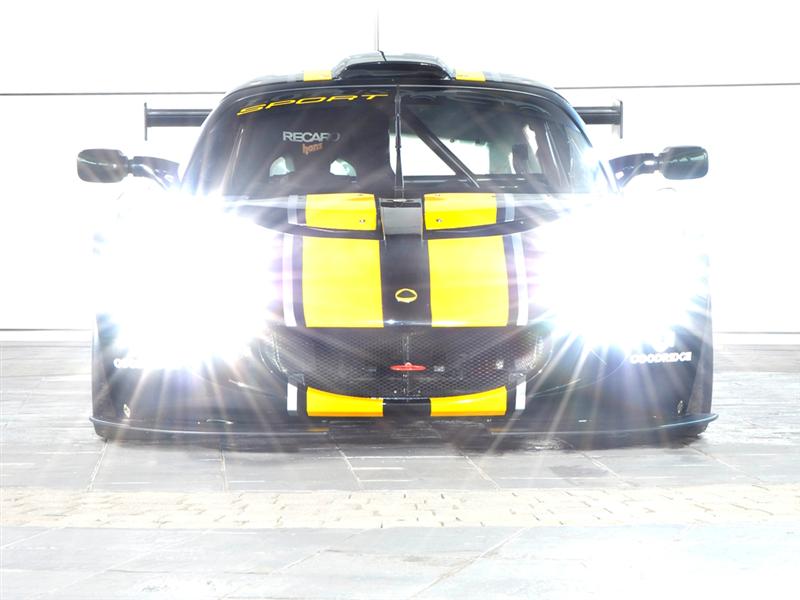 Commenting on the encouraging test session, Chris Arnold, General Manager of Lotus Sport, explained: “We were
delighted to attend the official FIA test session. Considering the car was still on the drawing board two months
ago it’s a fantastic achievement by the team to complete the build in such a short time. We knew this test would
be a first shakedown for the car on slicks and I’m very pleased with the results. Our winter development programme
starts with a wind tunnel test just before Christmas followed by further work in preparation for the next FIA
test in March.”
Commenting on the encouraging test session, Chris Arnold, General Manager of Lotus Sport, explained: “We were
delighted to attend the official FIA test session. Considering the car was still on the drawing board two months
ago it’s a fantastic achievement by the team to complete the build in such a short time. We knew this test would
be a first shakedown for the car on slicks and I’m very pleased with the results. Our winter development programme
starts with a wind tunnel test just before Christmas followed by further work in preparation for the next FIA
test in March.”
Like the standard Exige, the Lotus Sport Exige GT3 comes complete with the award-winning light weight bonded
aluminium chassis. This is complemented by low weight 5-spoke forged alloy wheels, carbon body panels, and a revised
high downforce aerodynamic package incorporating a race front splitter and adjustable carbon fibre rear wing.
Highest Performing, Limited Edition Exige:
February 24, 2005
March 2005
Vehicle Description Technical Specifications
Engine
Mid-mounted, transverse, 1796 cm3, 2ZZ-GE engine, Metal Matrix Composite (MMC) &
aluminium lightweight and compact construction
Max Power
181 kW (243 hp, 247 PS) @ 8000 min-1
Max Torque
236 Nm (174 lbft, 24 kgm) @ 7000 min-1
Power to weight ratio
195 kW/t ( 261 hp/t, 266 PS/t )
Specific power output
100.78 kW/L (136.97 hp/L, 137.4 PS/L)
Emissions control
Three-way catalytic converter
Euro IV emissions compliant with full On-Board Diagnostics (OBD)
Transmission
C64 Gearbox, aluminium lightweight construction, 6-speed, close ratio, constant mesh
helical gears and open differential
Suspension
Fully independent sport suspension utilising unequal length wishbones, 2-way adjustable
Ohlins dampers with ride height adjustment, adjustable front anti-roll bar, Eibach coaxial coil spring
at each corner and front anti-roll bar.
Chassis
Lotus designed lightweight structure of epoxy bonded Aluminium alloy extrusions with
integral steel seat-belt support structure and lightweight steel rear subframe
Steering
Solidly mounted mechanical rack and pinion steering box with 2.8 turns lock-to-lock.
Brakes
Servo-assisted, track tuned 4-channel Antilock Braking System (ABS) with Lotus/AP-Racing
twin-piston fixed aluminium alloy front brake calipers, Brembo single-piston sliding rear calipers and
282 mm diameter, 26 mm thick front and rear cast-iron ventilated & crossdrilled discs.
Wheels
Unique black lightweight eight spoke wheels (16” front and 17” rear)
Tyres
Gear ratios
First 3.116:1
Second 2.050:1
Third 1.481:1
Fourth 1.166:1
Fifth 0.916:1
Sixth 0.815:1
Reverse 3.250:1
Final drive 4.529:1Performance Figures
0-60 mile/h
3.9 s
0-100 mile/h
9.9 s
Maximum speed
249 km/h (155 mph)
Fuel consumption - urban
TBA
Fuel consumption - extraurban
TBA
Fuel consumption - combined
TBA
C02 emissions
TBA
Dimensions
Weight distribution
42% Front – 58% Rear
Fuel tank capacity
40 L ( 8.8 gal (UK) )
Luggage capacity
112 L - 50 kg
Wheelbase
2300 mm
Track – front
1457 mm
Track – rear
1507 mm
Overall length
3797 mm
Overall width (door mirrors excluded)
1727 mm
Overall width (door mirrors included)
1850 mm
Overall height - midladen (as per unladen with 2x 75 kg occupants)
Adjustable: 1149 mm to 1159 mm
Overhang – front
805 mm
Overhang – rear
692 mm
Ground clearance – midladen (as per unladen with 2x 75 kg occupants)
Adjustable: 120 mm to 130 mm
Vehicle mass - unladen (running order, full tank of fuel, no occupants, no luggage)
930 kg
12 January 2005
Hethel, UK
The Lotus Sport Exige is directly developed from the road-going Lotus Exige that was unveiled at the Geneva
Motorshow in 2004. The heart of the Sport Exige is the bonded and extruded Aluminium Chassis, the technology for
which was first introduced in the Lotus Elise in 1995.
Lightweight "Z-Preg." carbon fibre bodywork was specially manufactured for Lotus by RTN, the team responsible
for the Le Mans winning Bentley. These panels (front clam, "A" panel, body side and sill, roof, engine cover and
rear clam) have been made using an innovative low temperature curing process. The moulds were taken directly from
the Sport Exige styling "clay" and the resulting carbon fibre panels are race-ready without having to rely on the
costly tooling process used in current carbon fibre technology. This is thought to be the first time that this
technology has been used on such large carbon fibre panels.
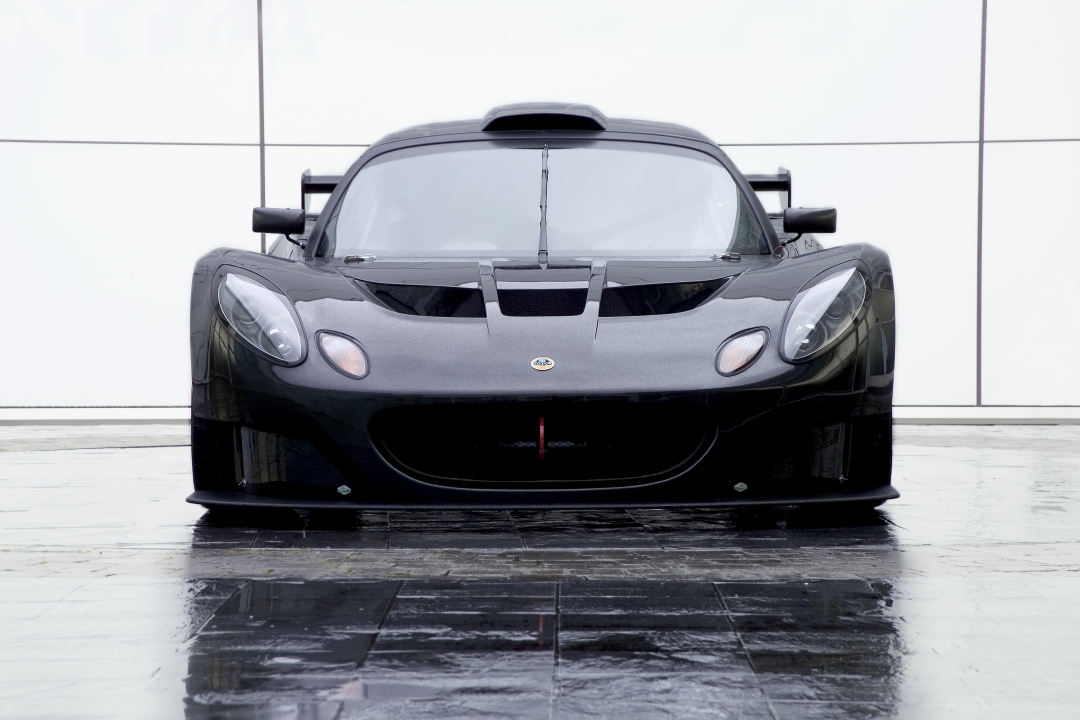
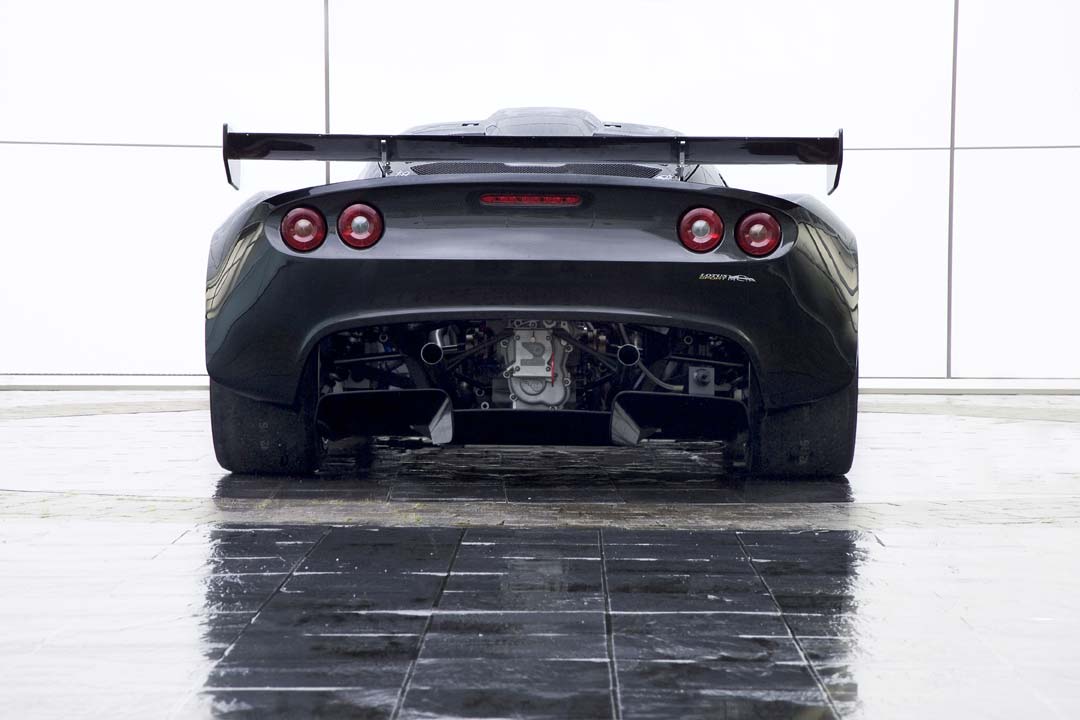
AP Racing provides the non-ABS braking system, which includes the pedal box (with brake balance bar and
cylinders). AP Racing also provides the powerful six piston brake calipers at the front and four piston brake
calipers at the rear. These calipers are mated to vented discs (344 mm diameter at the front and 330 mm diameter
at the rear).
Ultra lightweight OZ Racing Chrono single-piece cast magnesium rims (8.8J x 17 ET40 at the front and 11.25J x
18 ET50 at the rear) are shod with Yokohama tyres (250/610-17 at the front and 280/650-18 at the rear).
A narrow angle V6, 2,998 cc Swindon Racing Engines tuned GM racing engine is mounted longitudinally in the
Lotus Sport Exige. The naturally aspirated 32-valve engine produces 400 hp (296 kW or 405 PS) at 7,750 rpm and
294 lb.ft (398 Nm or 40.6 kgm) of torque at 6,500 rpm and has a maximum engine speed of 8,250 rpm. When the
light weight of the Lotus Sport Exige is taken into consideration, the power to weight ratio is a phenomenal
470 hp / tonne (0.351 kW/kg or 476 PS/tonne). The engine itself weighs 157 kg.
The one-off racecar has been designed by Barney Hatt (Principal Designer for Lotus Design), under the
direction of Russell Carr (Chief of Design). Taking the already aerodynamic road going Exige, Hatt designed the
Lotus Sport Exige with the requirements to carry the design of the Exige and the brand attributes of Lotus into
a competitive racecar. Russell Carr explains the work needed to design the Lotus Sport Exige: "The objective was
to create a dramatic design and to take into account aerodynamic criteria to produce a race car that was not only
competitive but also stunningly good looking. General motorsport regulations also had to be adhered to so the
fact that the resulting racecar looks like a natural competition evolution of the road going Exige is a testament
to the purity and effectiveness of the original design."
The Lotus Sport Exige is slightly longer (350 mm) and wider (100 mm) than the road-going Exige to accommodate
the larger engine, wider track, longer wheelbase and to optimise the aerodynamics. The length is mainly from the
cockpit rearwards but the short rear overhang design of the road-going Exige is maintained.
Engine
Lotus Sport Exige
Production Lotus Exige
(Road Specification)
Wheelbase
2500 mm
2300 mm
Track - front
1545 mm
1457 mm
Track - rear
1528 mm
1507 mm
Overall length
4142 mm
3797 mm
Overall width (door mirrors excluded)
1840 mm
1727 mm
Overall width (door mirrors included)
1850 mm
1850 mm
Overall height
1125 mm
1159 mm (mid-laden)
Overhang - front
950 mm
805 mm
Overhang - rear
692 mm
692 mm
Vehicle mass - unladen
(running order, full tank of fuel, no occupants, no luggage)850 kg
875 kg (no options)
The main operating subsidiary of Group Lotus plc is Lotus Cars Ltd., which has two operating divisions -
Lotus Cars and Lotus Engineering: Lotus Cars builds and commercialises Lotus sports cars, Elise and Exige;
builds sportscars for General Motors and manufactures the advanced composite front and rear crash structures
for Aston Martin V12 Vanquish. Lotus Engineering provides comprehensive and versatile consultancy services to
many of the world's OEMs and Tier 1 suppliers, offering a full engineering service from initial concept and
project design through development to full production prototype build.
Lotus Sport is the performance arm of Lotus Cars Ltd and is located at the Norfolk Head Office next to
the famous Hethel test track. The department designs and builds modified versions of the standard Lotus road
cars with special emphasis on upgraded performance, improved ride and handling packages and race specific
safety equipment. Individual performance parts to customise or upgrade a vehicle are available via Lotus
Sport and its workshops can service, repair, restore or upgrade a standard road or competition Lotus. In
addition, Lotus Sport provides a range of driving packages using the renowned Hethel test circuit, including
driver training and corporate days, as well as offering enthusiasts a guided tour of the Lotus factory.



